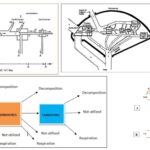Organise a discussion in your class on the topic – Are viruses living or non- living?
Organise a discussion in your class on the topic – Are viruses living or non-
living?
Please login to submit an answer.
Certainly! Here’s a structured outline for organizing a class discussion on the topic “Are viruses living or non-living?”:
Discussion Topic: Are viruses living or non-living?
Introduction:
– Begin by asking students what characteristics define living organisms (e.g., cellular structure, metabolism, growth, reproduction, response to stimuli).
– Introduce viruses as unique entities that challenge these definitions.
Key Points for Discussion:
1. Characteristics of Viruses Suggesting They Are Non-Living:
– Lack of cellular structure: Viruses do not have a cell, nucleus, or organelles.
– Inert outside host: Viruses cannot carry out metabolic activities on their own and remain inert outside the host cell.
– Lack of independent reproduction: They require host cells to replicate.
– No growth or independent movement: Viruses do not grow or move on their own.
1. Characteristics Suggesting They Are Living:
– Genetic material: Viruses contain DNA or RNA, which carries genetic information.
– Evolution: Viruses can undergo mutation and evolve over time.
– Reproduction: They reproduce, but only within host cells.
– Host dependency: They show some biological activity when inside host cells, such as hijacking host machinery.
1. Arguments in Between:
– Some scientists consider viruses as non-living infectious agents because they lack cellular metabolism and independent life processes.
– Others argue they are biological entities because they possess genetic material and can evolve.
Questions for Students to Consider:
– Do viruses meet the criteria of life? Why or why not?
– If viruses can evolve and reproduce, does that make them alive?
– How does the nature of viruses affect how we treat and prevent viral diseases?
Conclusion:
– Summarize differing viewpoints.
– Emphasize that viruses occupy a gray area between living and non-living entities.
– Encourage students to think critically about life’s characteristics and how viruses challenge traditional definitions.
This discussion fosters critical thinking and helps students understand the complexity of defining life, especially in the context of viruses.
- Share on Facebook
- Share on Twitter
- Share on LinkedIn
Helpful: 0%




